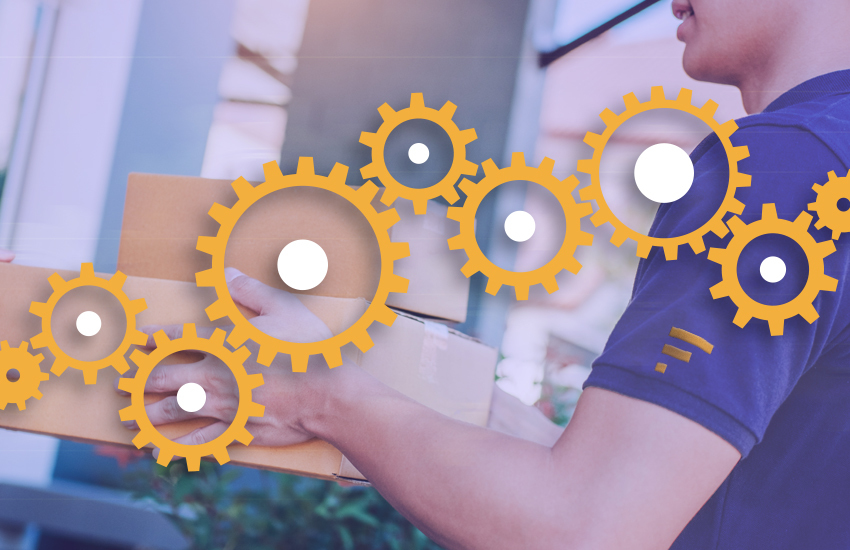
Retailers have to keep up with today’s modern consumer. And that means meeting their demands for fast delivery, easy returns, in-stock inventory, and more. It also means delivering on those demands no matter where the customer shops – whether it’s in-store, online, in mobile apps, from a catalog, etc. – or how they want their package delivered – shipped direct, pick up in store, curbside delivery, locker/parcel pickup, etc.
Typically, retailers believe they have to offer an omnichannel experience to please customers and keep them loyal. So what does that mean and is omnichannel logistics really the answer? Or, in reality, does retail need to evolve even further to a channel-free logistics mindset?
Let’s break it down.
For retailers, omnichannel means using all available channels, physical and digital, to create a cohesive experience for their customers and having groups of inventory to meet their product needs. While the retailer houses inventory as separate groups or at least prioritized by groups (think wholesale, brick and mortar, ecommerce, drop ship, etc.), the experience for the customer has to be seamless, efficient, easy, and fast no matter how many touchpoints they have. Therefore, each channel has to be integrated to some degree and have visibility across the inventory to be able to meet consumer demands and expectations.
However, that’s not always the case for many retailers, leaving them with many challenges associated with providing a true, convenient omnichannel experience.
Providing consumers options and a unified experience is great, but it has to be delivered on to be truly successful. And that can be the tricky part for a lot of retailers. Because the omnichannel experience opens up a lot of options for customers, companies have to deliver on them. They need to not only have the inventory available but also need the full end-to-end supply chain solution to deliver on it without it costing a fortune. They also have to be adaptable, scalable, and efficient.
Here's some of the common challenges associated with delivering an effective omnichannel experience:
Even with all of these challenges, retailers still have to meet consumer demands to win in today’s competitive marketplace. So what’s the solution? A new mindset and more streamlined solution.
“Customers don't think in channels,” says Bill Thayer, Founder and CEO of Fillogic. “So how we look at it is it's channel-free logistics. Is it being fulfilled from the store? Is it being fulfilled from a larger facility that's being zoned skipped into a facility? Is it a returns consolidation point? It really doesn’t matter, but what does is that the infrastructure is there and it’s operational. It’s just getting shipments where they need to go quicker with better technology, better integration, better tracking and tracing, and just being overall better.”
By looking at the consumer experience in terms of channel-free rather than omnichannel, it brings the mindset of everyone together to deliver the end product where it needs to go and when it needs to be there. It takes the silos out and ensures that every cog in the supply chain, every process, and every person is working cohesively through integrated technology.
That’s what local market logistics providers, like Fillogic, are able to do because of the extensive alternative delivery market that they’ve built. They built proprietary software that integrates with retailers’ ordering systems, warehouses’ management systems, carriers’ transportation management systems, and anything else in between. Therefore, the channel no longer matters because it’s all handled within the integrated technology.
Additionally, the inventory is housed where the end consumers live. In the Fillogic Hub Network, which are technology-enabled micrologistics fulfillment centers built in premium shopping malls or retail centers, inventory is picked, packed, segmented, and shipped based on customer orders, not by channel. It houses the inventory close to consumers and delivers it where it needs to go – whether that is to the store in the mall, a curbside pickup or parcel locker, across the country via an airline partner, or delivered to the end buyer. It’s simple, efficient, cohesive, and channel-agnostic.
“So, our customers, right now, that we do full wholesale and retail fulfillment for, it's all done off the same inventory,” Thayer says. “I have no interest whatsoever in having multiple groups of inventory because that's what uses more capacity. Same thing when we store inventory in a location. We have the ability to store multiple SKUs because of how it’s picked, packed, scanned, and shipped. We just need the inventory that the customers are buying – we don’t care where they are doing the buying as long as we can track it all.”
To sum up, the challenges of delivering an omnichannel experience have been well known to retailers. It's time they rethink the strategies to meet consumer needs in the 21st century. By viewing consumer experience in terms of channel-free logistics with a hyper focus on local markets and local needs, retailers will ultimately be able to better fulfill customer demands.
Channel-free logistics takes multiple steps out of the supply chain and focuses on the connected infrastructure network that simplifies the whole order to delivery process. Therefore, companies that prioritize this way of doing things will be able to take advantage of higher levels of customer satisfaction and increased sales volume. Reliable partnerships are crucial for successful implementations of channel-free logistics models as these help save costs and maintain transparency throughout the supply chain. Thus, a channel-free logistics mindset can bring new opportunities for retail businesses in this ever-evolving digital era.
Copyright © 2026 R and B Supply Chain Inc. DBA Fillogic All Rights Reserved.